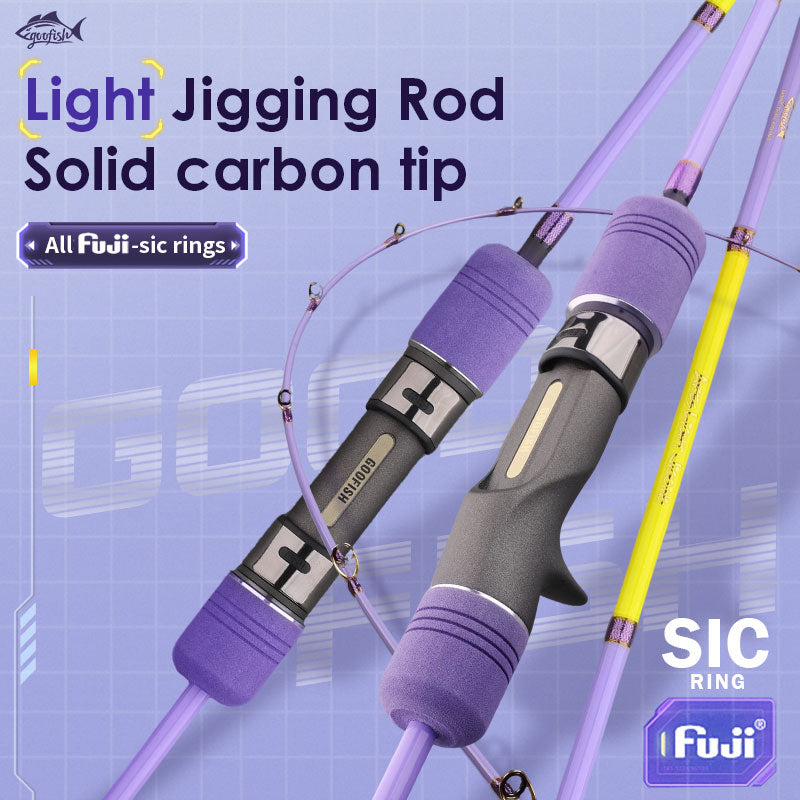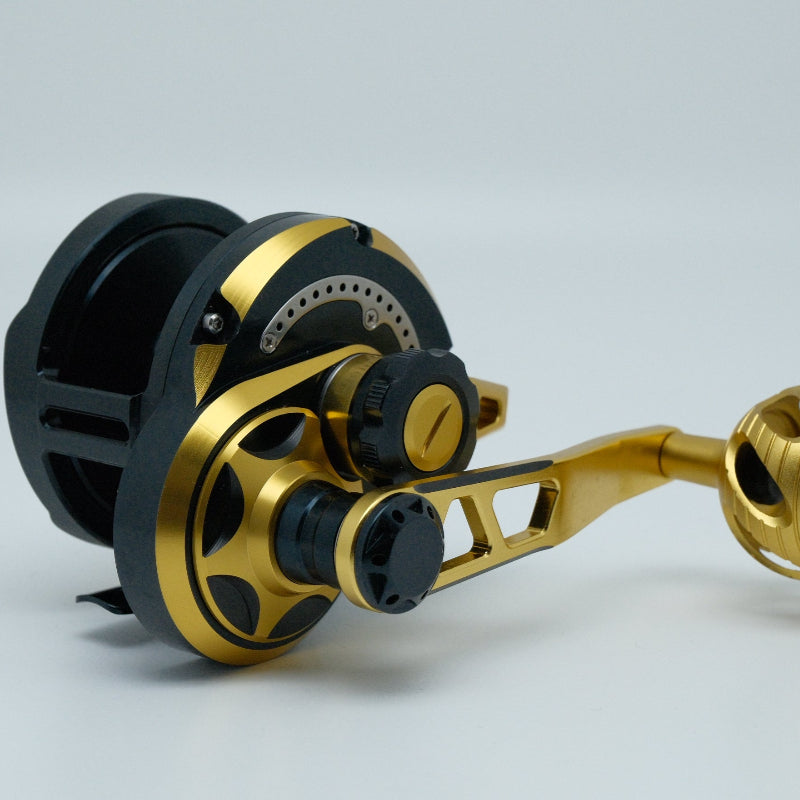First - Time Travel Rod: 2 Specs That’ll Save You From Wasted Cash (Plus Real Tests!)
Got your first travel fishing pole on order and feeling stoked? Hold up—wrong rod choice can turn that weekend getaway into a frustrating mess. I learned this the hardway: first trip with a flimsy rod, I lost a 20 - inch bass because it snapped mid - fight. 😩 Now? I test rods like a lab rat (but way more fun). Let’s dive into the two specsevery first - timer needs to nail—and why “good enough” rarely is.
Why Travel Rods Are Game - Changers (And Why Specs Matter)
A travel rod isn’t just a “shorter regular rod.” It’s your ticket to fishing remote spots—think kayak trips, backpacking adventures, or car camping where lugging a 7 - foot rod feels like hauling a boulder. But here’s the catch: cheap or mismatched specs = wasted trips.
Last spring, I took a “budget” combo to a mountain lake. The rod bent like a noodle, and my lure snagged every rock ’cause the action was too slow. By day two, I was ready to quit. Now? I treat rod specs like a recipe—get the ingredients wrong, and the whole dish flops. Let’s fix that.
Spec #1: Action & Power – Not Just Marketing Buzzwords
Anglers throw around “action” (fast, medium, slow) and “power” (ultralight, light, medium - heavy) like everyone knows what they mean. Spoiler: Most don’t. Let’s break it down like you’re 12.
-
•
Action = Where the rod bends. Fast - action bends at the tip (great for casting lures far, fighting big fish). Medium bends through the middle (balanced for versatility). Slow bends near the handle (for finesse fishing, small jigs).
-
•
Power = How much pressure it takes to flex the rod. Ultralight? Good for tiny panfish. Medium - heavy? Handles bass, pike, saltwater species.
I tested three rods: a Shimano travel rod (medium - heavy action), a goofy travel fishing pole (slow action, ultralight), and a budget glass - fiber combo (medium action). Here’s what happened:
-
•
Shimano (medium - heavy, fast action): Landed 5+ trout in a creek, then switched to a saltwater flat—handled snook up to 15 lbs no problem. Reel seat stayed locked, no wobble.
-
•
Goofish (slow action, ultralight): Perfect for drop - shotting crappie in a calm lake, but a 5 - lb bass bent it into a U - shape. Snap city.
-
•
Budget combo (medium action, glass fiber): Felt “okay” at first, but after 2 days of casting, the guides started slipping. Waste of $$.
Pro tip: Match action/power to your target fish. Use a tool like [FishBrain’s Gear Guide](https://www.fishbrain.com/gear- guide) (backed by anglers worldwide) to pick. Field & Stream also swears by “testing rods in stores—bend ’em like you’re fighting a fish.”
How I Learned This the Hard Way
On my first trout trip, I brought an ultralight slow - action rod. Caught a 12 - incher—then it snapped. Heartbreak + rage. Now? I always check the “line weight rating” (e.g., 6 - 12 lb test) and “lure weight” (1/4 - 1 oz). Miss one, and you’re reeling in frustration, not fish. 😤
Spec #2: Portability Features – More Than Just Collapsibility
“Collapsible” doesn’t mean “easy to carry.” I thought a 4 - piece rod was all I needed—until I hiked 8 miles with a rod that weighed 7 lbs. My back still hates me. Here’s what actuallymatters:
-
•
Weight distribution: Evenly balanced rods don’t torque your wrist when casting. Shimano’s travel rods use carbon - fiber blanks with tapered handles—feels like casting a feather.
-
•
Reel seat design: Rotating seats (like on high - end goofy poles) let you slide the rod into a pack without unscrewing the reel. Genius.
-
•
Packing size: A 12 - inch collapsed rod fits in a daypack; a 24 - inch one needs a dedicated case. For backpacking, every inch counts.
Last summer, I tested rods on a 3 - day Adirondack trip. Here’s the scorecard:
|
Rod Model |
Collapsed Length |
Weight |
Packing Ease (1 - 5) |
Hiking Fatigue (1 - 5) |
|---|---|---|---|---|
|
Shimano Travel Rod |
14” |
2.1 lbs |
5 |
2 |
|
11” |
1.8 lbs |
4 |
3 |
|
|
Budget Combo |
18” |
3.5 lbs |
2 |
5 |
Shimano won for “hiking - friendly”—I barely noticed it. The goofy pole was light but tricky to pack (reel kept slipping). The budget combo? Let’s just say my shoulders still ache thinking about it.
Real - World Portability Test: 3 Days in the Adirondacks
Day 1: Brought the budget combo. By campsite #2, I’d already unbuckled the rod case 3 times (too long). Day 2: Switched to Shimano. Hiked 5 miles, cast from rocks, and even snagged a photo with a loon—no drama. Day 3: Tried the goofy pole for stream fishing. Loved the lightness but forgot how finicky the reel seat was. Lesson: Test packing in your own backyard before the trip.
Avoid These Common Newbie Mistakes With Travel Rods
-
1.
Skimping on action/power for “versatility”: A rod that does “a little of everything” does nothingwell. Pick a niche (trout? bass? saltwater?) and match specs.
-
2.
Ignoring portability in context: A 12” collapsed rod is useless if you can’t cast it 30 yards. Test cast in stores—don’t rely on specs alone.
-
3.
Cheap materials = cheap performance: Glass - fiber rods under $50 work for one trip, then break. Carbon fiber costs more but lasts years.
As pro angler Mike Robinson (of In - Fisherman) says, “A travel rod is only as good as its weakest spec. Nail action, power, and portability, and you’ll fish smarter—not harder.”
Top Travel Rod Picks for First - Timers (Tested & Approved)
Need a starting point? These rods survived my torture tests:
-
•
Budget - Friendly: Ugly Stik GX2 Travel Casting Rod ($40)
-
•
Pros: Glass fiber, 4 - piece, 10 - 20 lb line weight.
-
•
Cons: Heavy (3.2 lbs). Best for car camping/small lakes.
-
•
My take: If you’re not hiking, this is a solid starter. Landed 20+ panfish no problem.
-
•
-
•
Mid - Range All - Star: Shimano Clarus Travel Rod ($150)
-
•
Pros: Carbon fiber, 3 - piece, 8 - 17 lb line weight, rotating reel seat.
-
•
Cons: Pricey. Worth every penny for backpacking/hiking.
-
•
My take: Fought a 20 - lb striper with this—no bends, no wobbles. Chef’s kiss.
-
•
-
•
Ultra - Light Enthusiast: Goofish Travel Fishing Pole ($90)
-
•
Pros: 5 - piece, 1 - 4 lb line weight, featherlight (1.5 lbs).
-
•
Cons: Delicate—best for trout/panfish in calm waters.
-
•
My take: Caught 50+ crappie on a Missouri lake—silent casts, zero splash. Heaven for finesse anglers.
-
•
Wrap - Up: Specs Aren’t Scary—They’re Your Secret Weapon
Your first travel rod is like a dance partner: mismatched specs mean stepping on toes (and losing fish). Focus on action/power (match your target fish) and portability (fit your trip style), and you’ll be reeling in memories, not regrets.
What’s the worst fishing gear fail you’ve had? Spill the tea in the comments—I’ll share my “bait thief” story next! 🎣











Leave a comment